I had the pleasure earlier this year of visiting a site I’ve long been obsessed with from afar, the magnificent stepwell of Chand Baori, in Abhaneri, India.
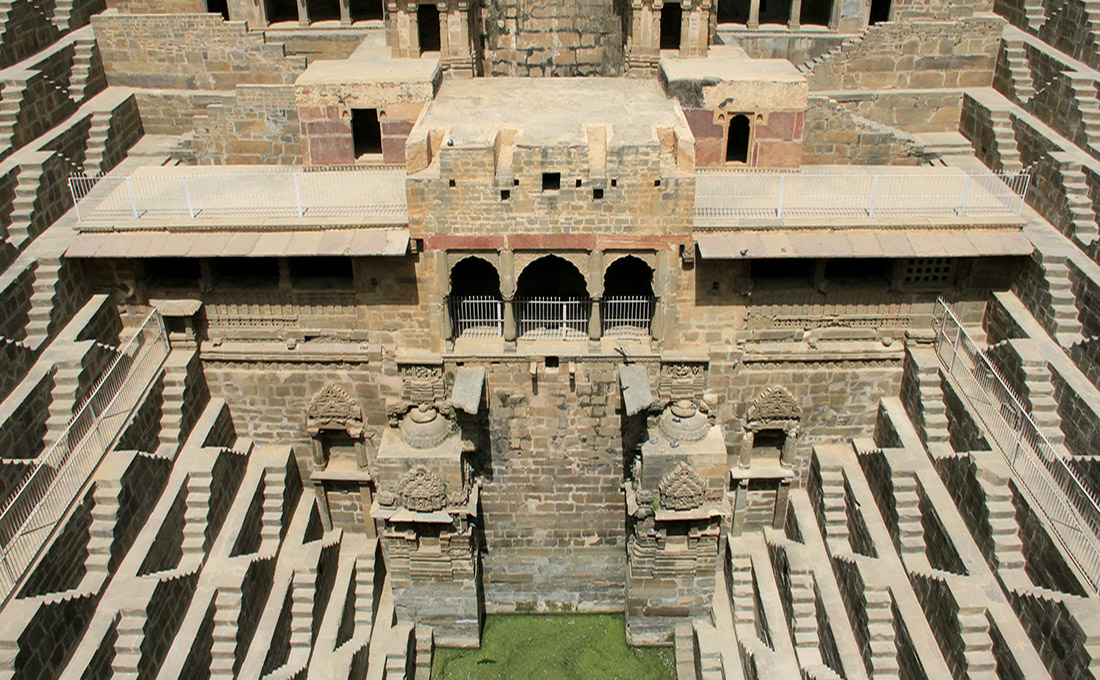 [Image: Chand Baori, Abhaneri, India; photo by BLDGBLOG].
[Image: Chand Baori, Abhaneri, India; photo by BLDGBLOG].
Nicola Twilley and I hired a car and driver for roughly USD $50-$60, for what turned out to be a total of about 5 hours, and we drove out from Jaipur to the small town of Abhaneri. Here is the site from above, on Google Maps. For anyone else interested in taking this trip some day, it is well worth the drive from Jaipur (and you can also visit the surreal ruined temple of Harshad Mata, photos of which I’ll try to post soon, as well).
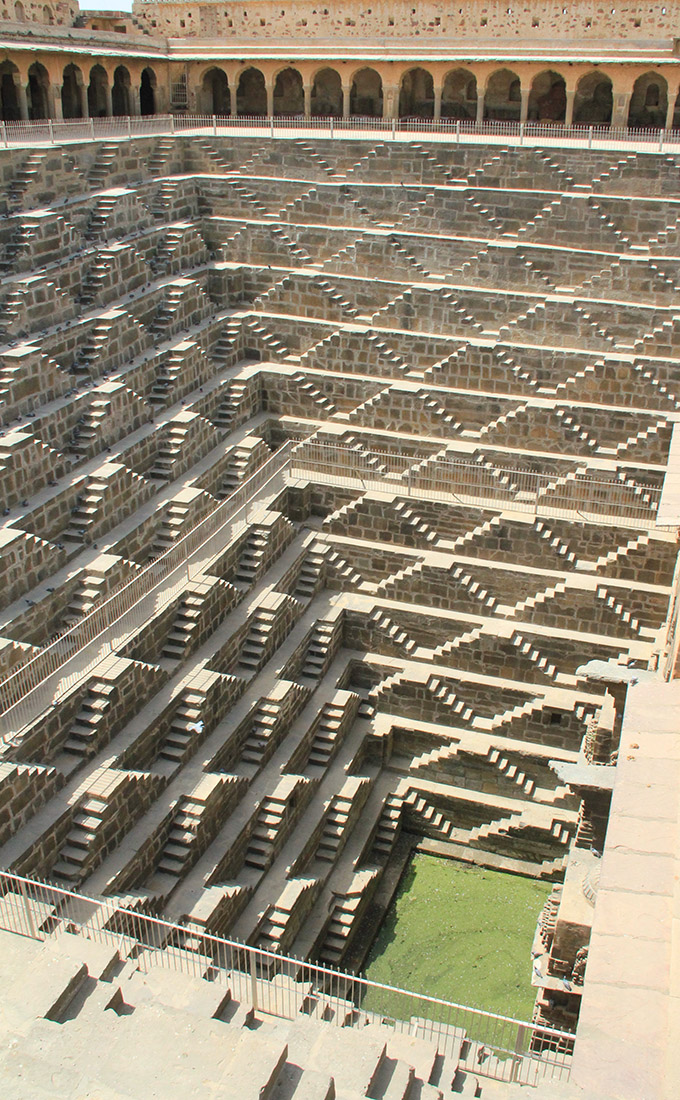 [Image: Chand Baori, Abhaneri, India; photo by BLDGBLOG].
[Image: Chand Baori, Abhaneri, India; photo by BLDGBLOG].
Taking information straight from the sign that greets you upon arriving at the stepwell—
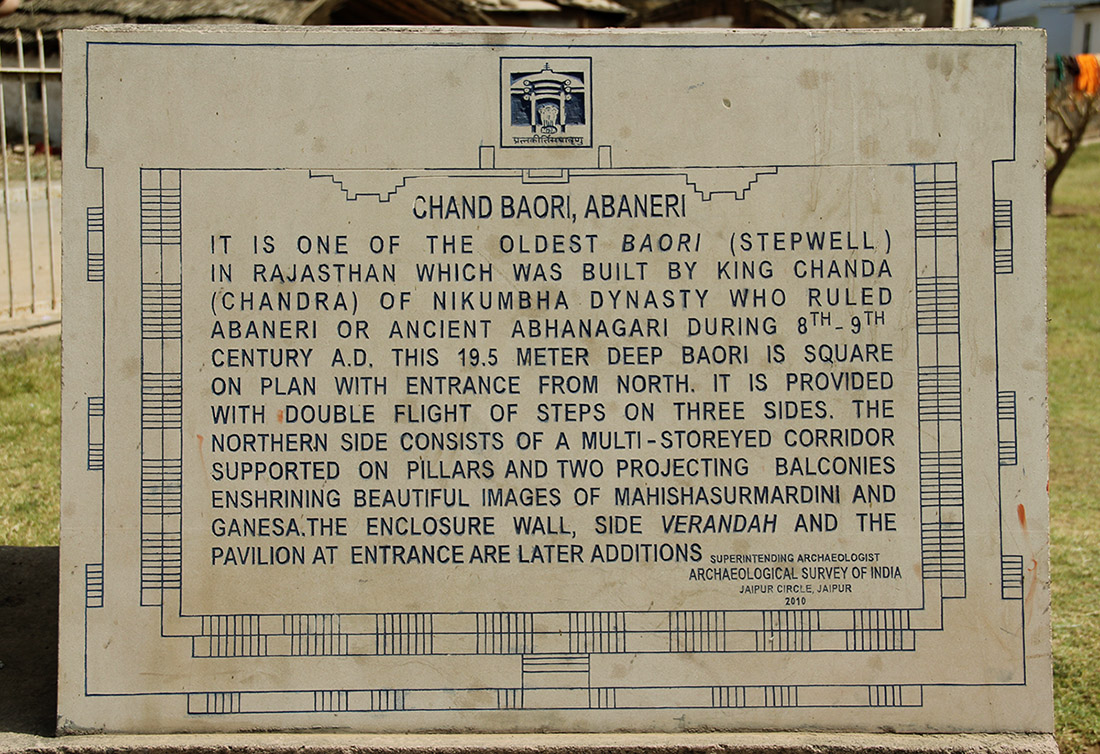 [Image: Chand Baori, Abhaneri, India; photo by BLDGBLOG].
[Image: Chand Baori, Abhaneri, India; photo by BLDGBLOG].
—Chand Baori is the oldest stepwell in Rajasthan, having been constructed in the 8th-9th centuries A.D. It is 19.5 meters, or roughly 64 feet, deep. The overwhelming majority of its surface area consists of steps—thousands of steps—all of which lead down to the water table, turning weekly water-gathering trips by local families into a communal spectacle, a social event framed by this extraordinary act of excavation and architecture.
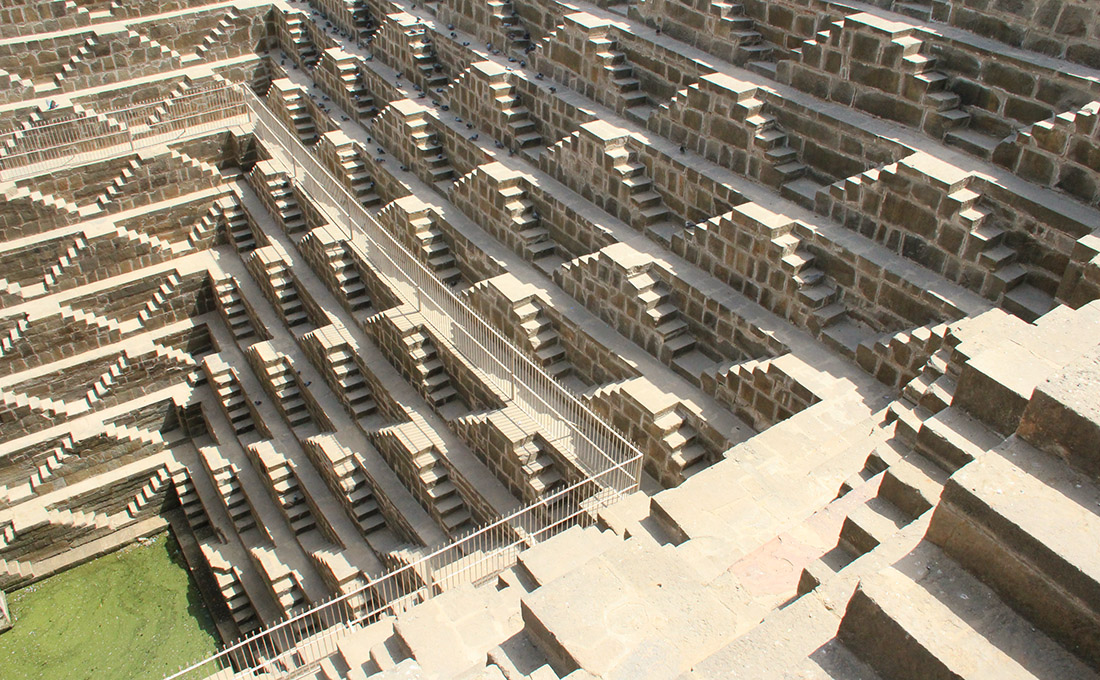 [Image: Chand Baori, Abhaneri, India; photo by BLDGBLOG].
[Image: Chand Baori, Abhaneri, India; photo by BLDGBLOG].
Whether or not the following information is true, I don’t know, but Nicola and I heard various versions of why Chand Baori was constructed where it was, the most compelling of which was that the nearby water tables of two oppositely flowing rivers in the region mixed underground here, leading to particularly clean water.
The algae-choked green soup now seen at the bottom of Chand Baori doesn’t necessarily make an argument for this version of history, but it’s a compelling vision, nonetheless: architecture as a kind of depth probe, spiked down into buried waters inside the Earth.
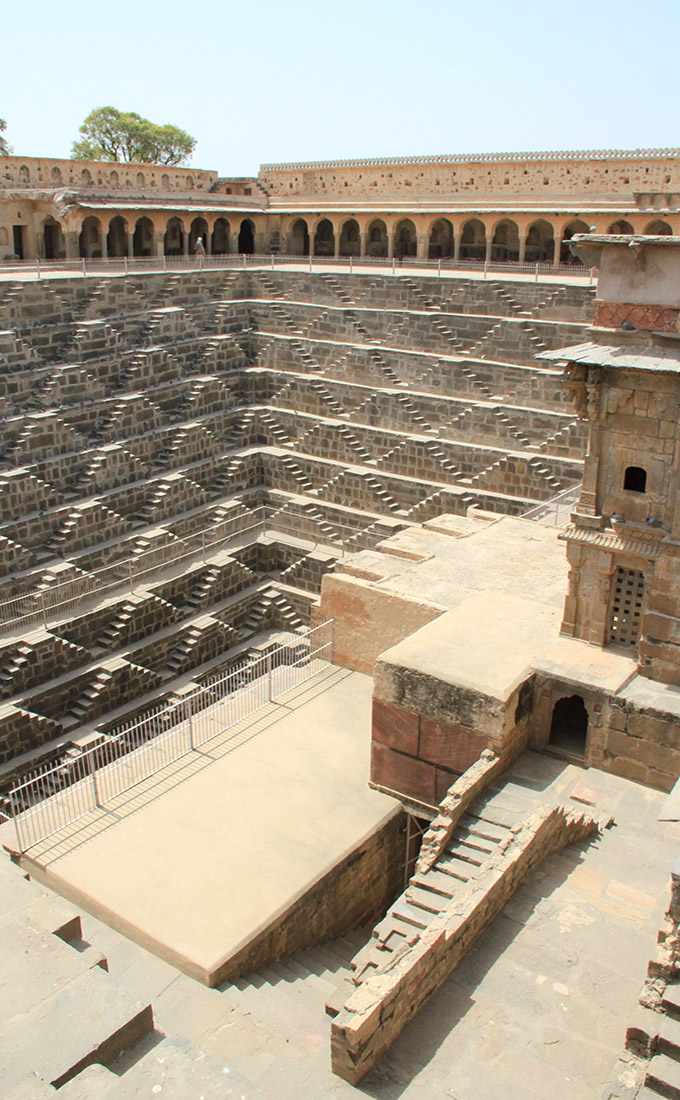 [Image: Chand Baori, Abhaneri, India; photo by BLDGBLOG].
[Image: Chand Baori, Abhaneri, India; photo by BLDGBLOG].
So this is what you see when you first walk in.
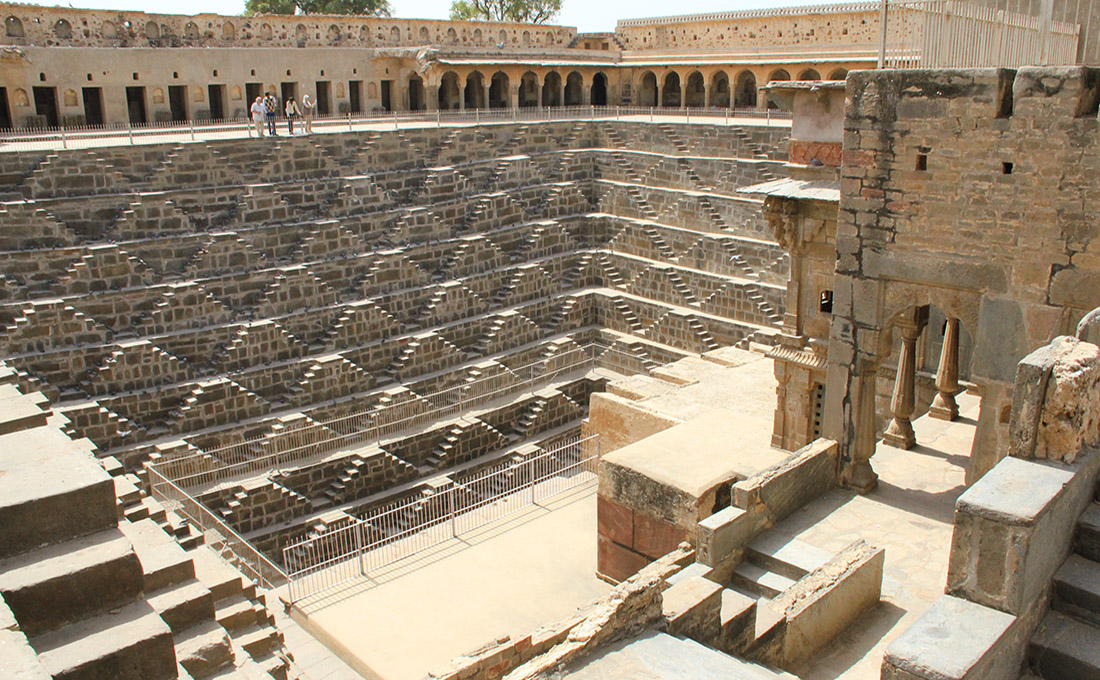 [Image: Chand Baori, Abhaneri, India; photo by BLDGBLOG].
[Image: Chand Baori, Abhaneri, India; photo by BLDGBLOG].
The well suddenly appears there, its own horizon line, like a landslide of masonry, a sinkhole stabilized by stairs, and the vertiginous sense of being drawn down into the maw of this place is extraordinary.
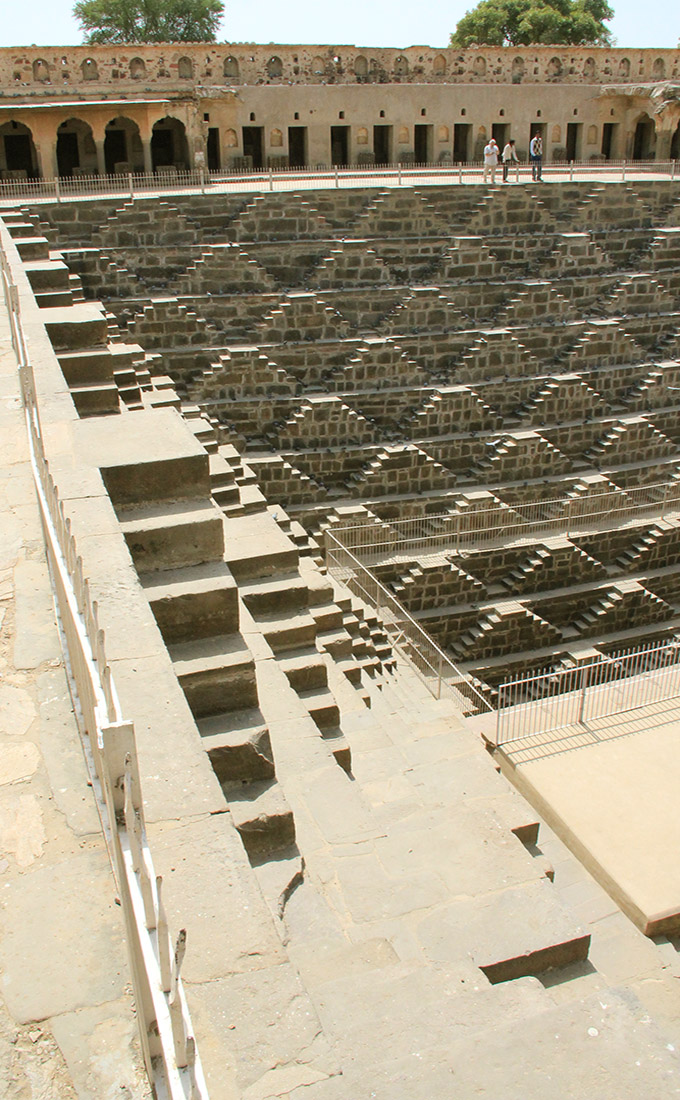
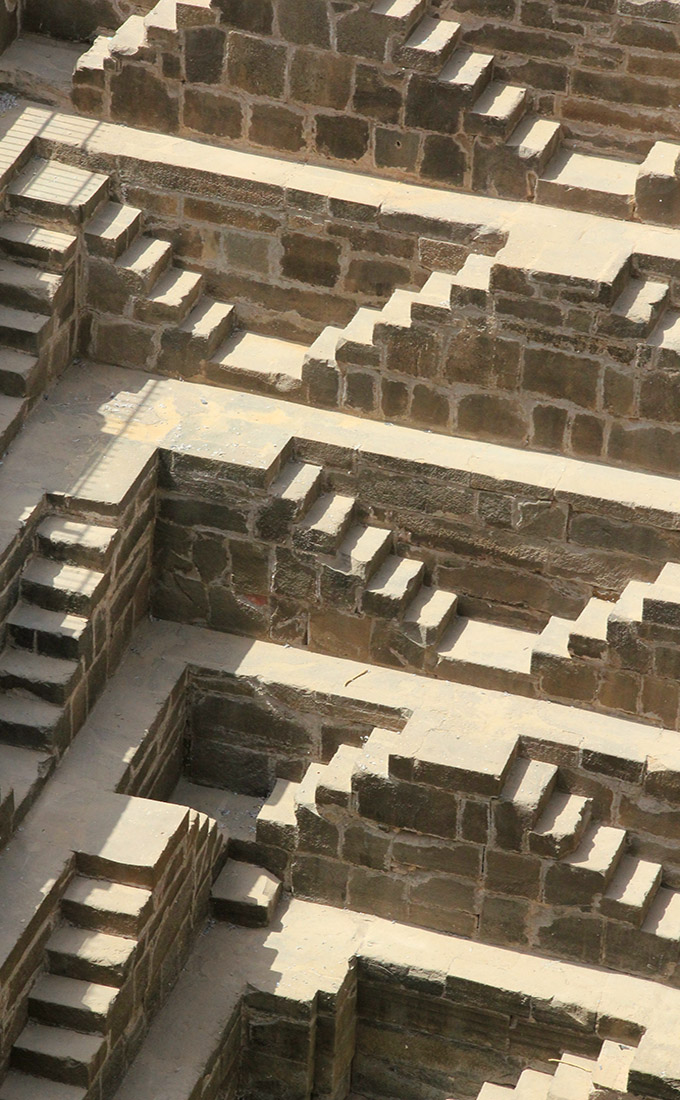 [Images: Chand Baori, Abhaneri, India; photo by BLDGBLOG].
[Images: Chand Baori, Abhaneri, India; photo by BLDGBLOG].
While we there, walking around the well’s upper edge and peering into alcoves lined with sculptures and fragments of statuary, we got to watch a flock of pigeons fly back and forth over the site seemingly subject to its own tides, birds washing from one side to the other and back again every fifteen minutes or so, nesting on heavily ornamented rock walls above the site or landing en masse on the steps themselves.
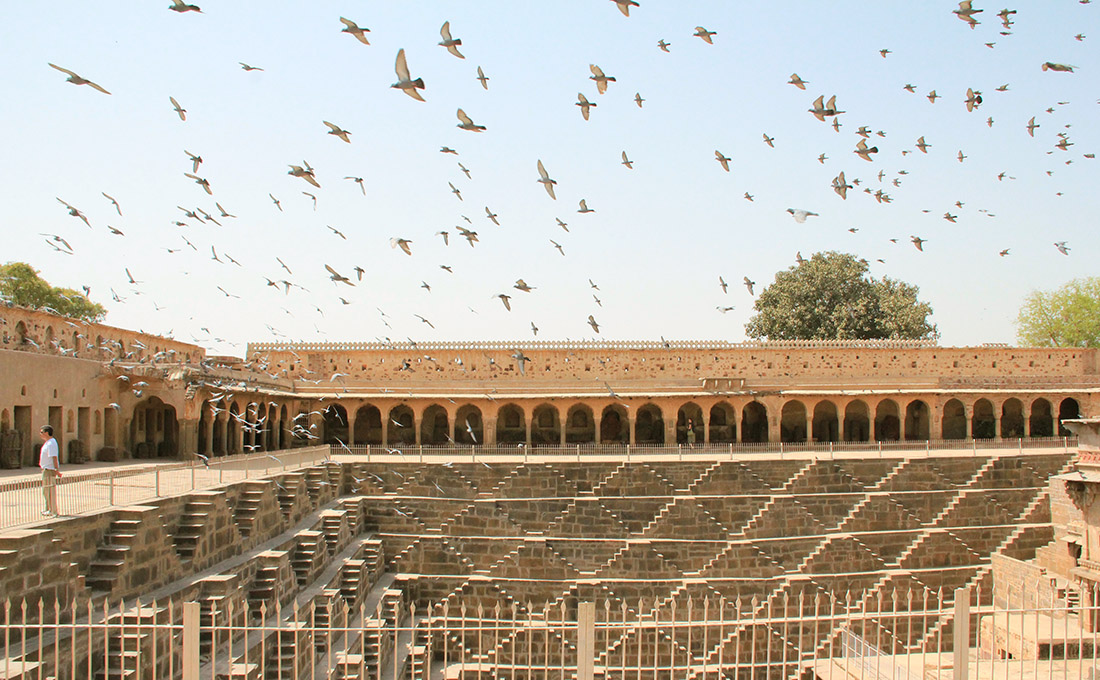
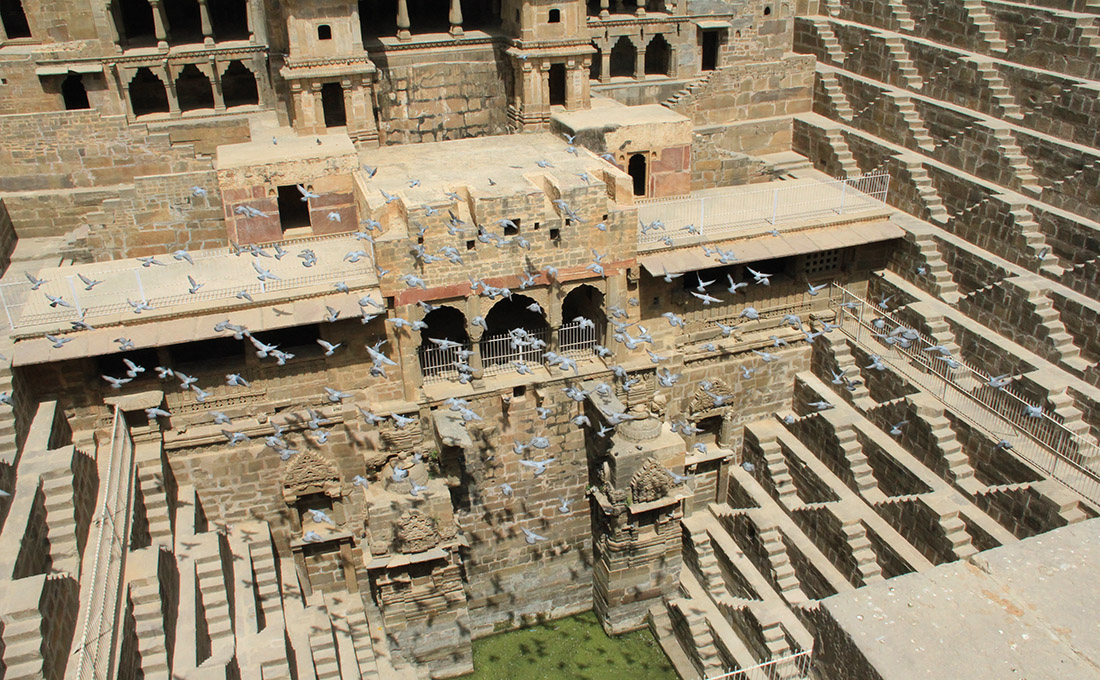
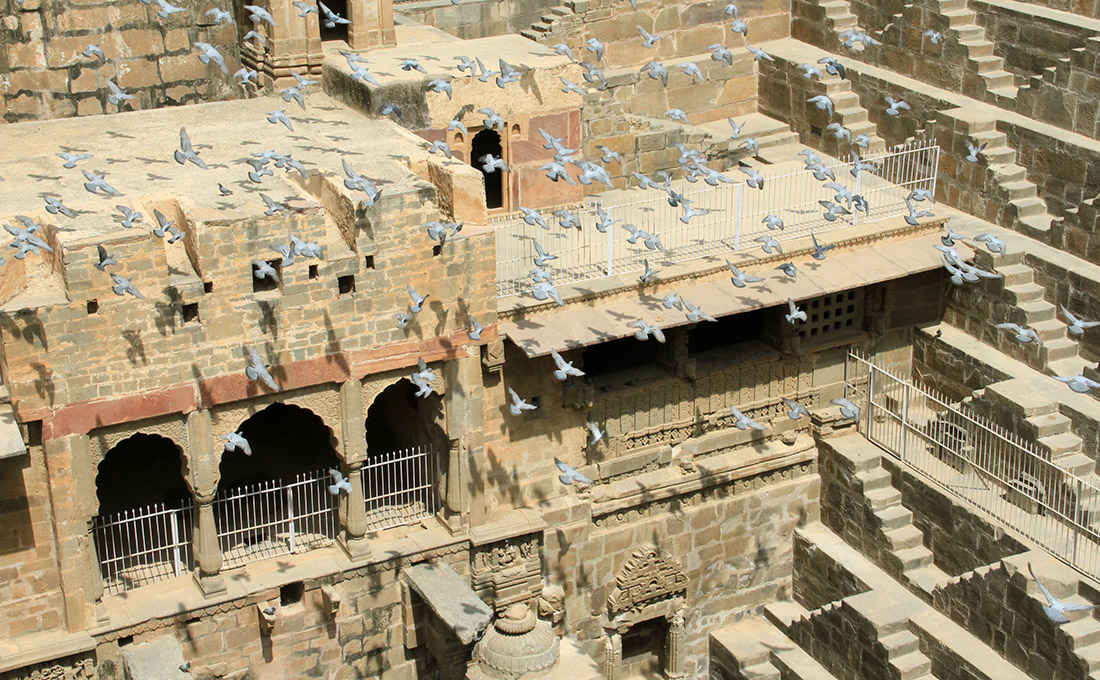
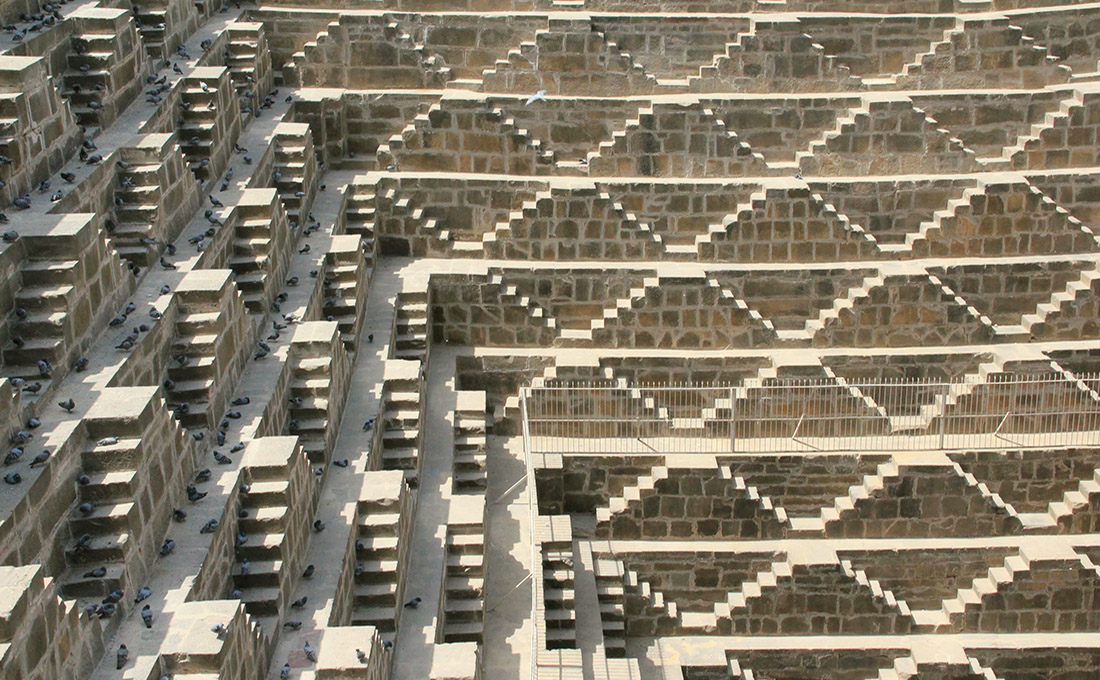
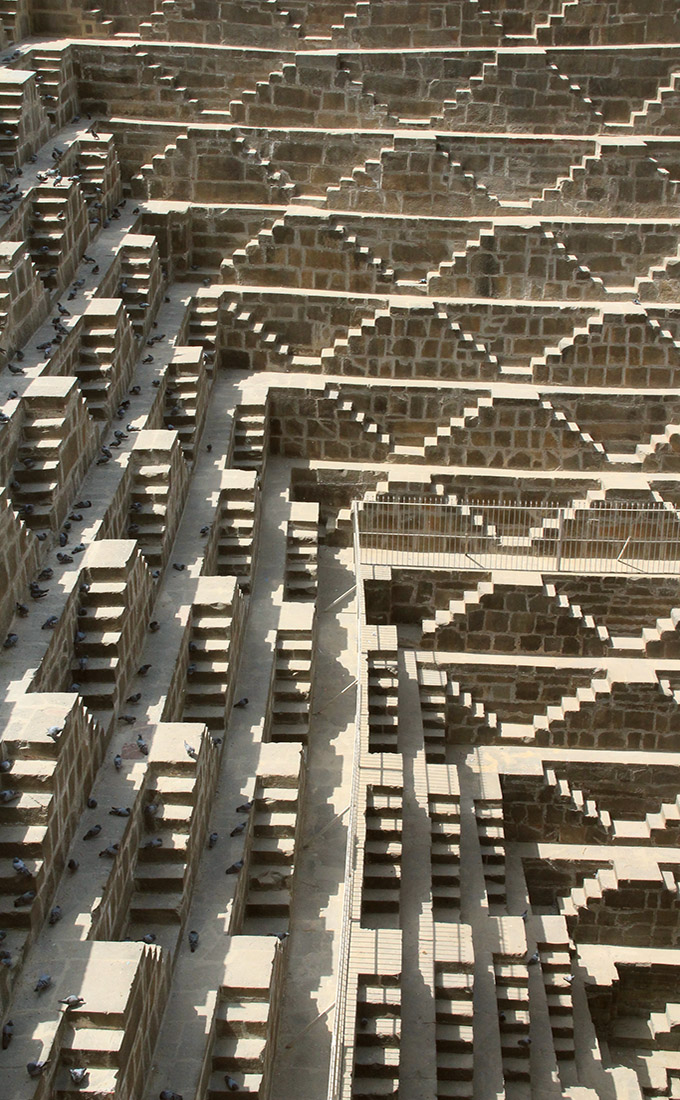 [Images: Chand Baori, Abhaneri, India; photo by BLDGBLOG].
[Images: Chand Baori, Abhaneri, India; photo by BLDGBLOG].
In any case, here are a bunch of images from our visit, looking down into the mouth of what is, in a sense, part pit, part building, part hydrological infrastructure, part ritual social space, an ocean of steps. Enjoy (and note that all images here are available in slightly larger versions if you open them in a new window).
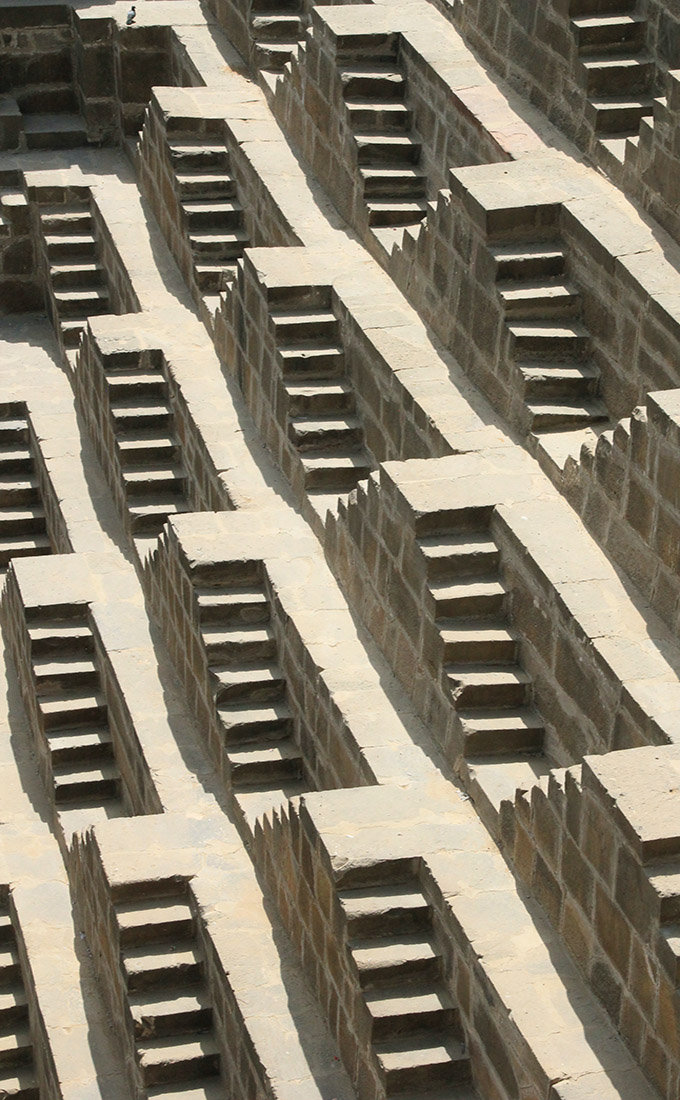
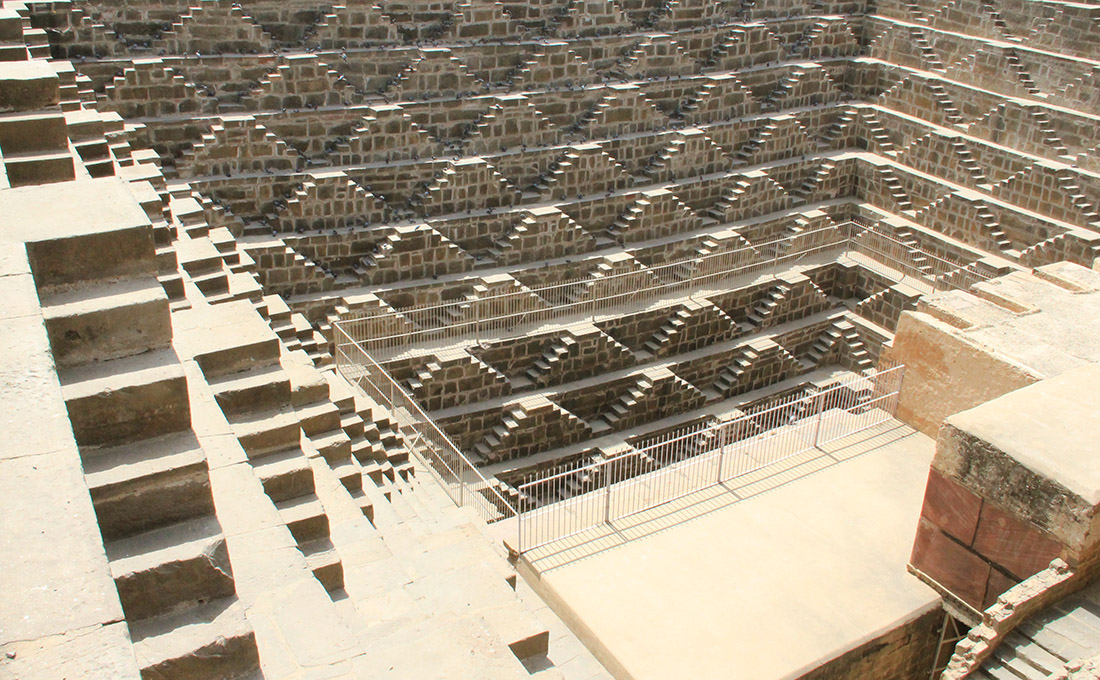
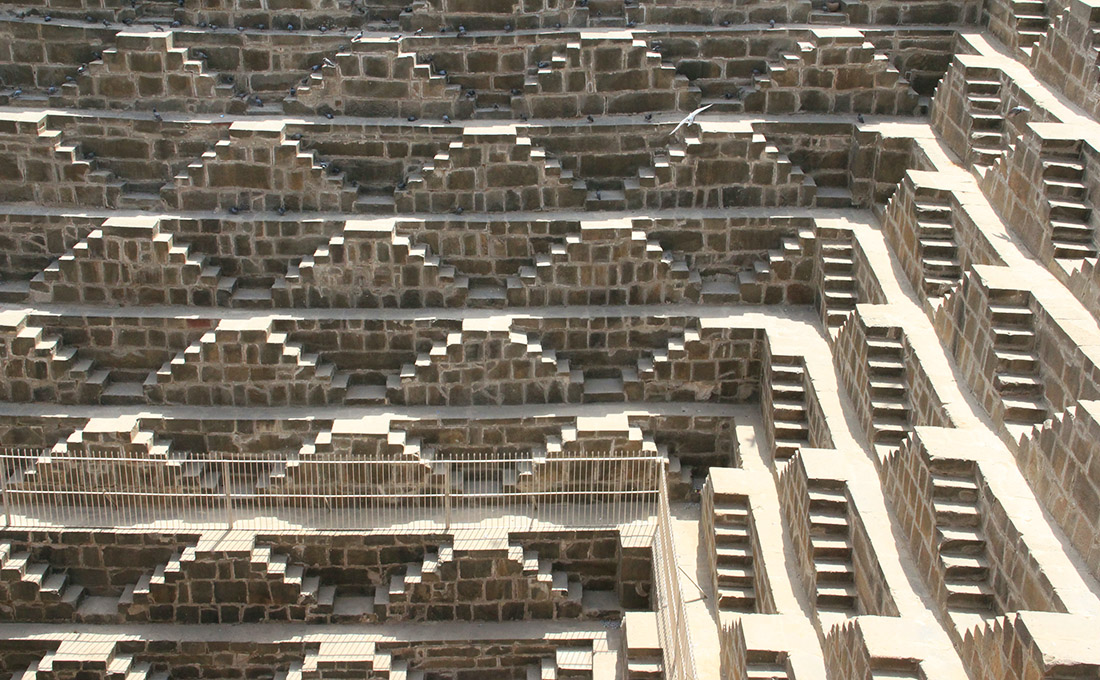
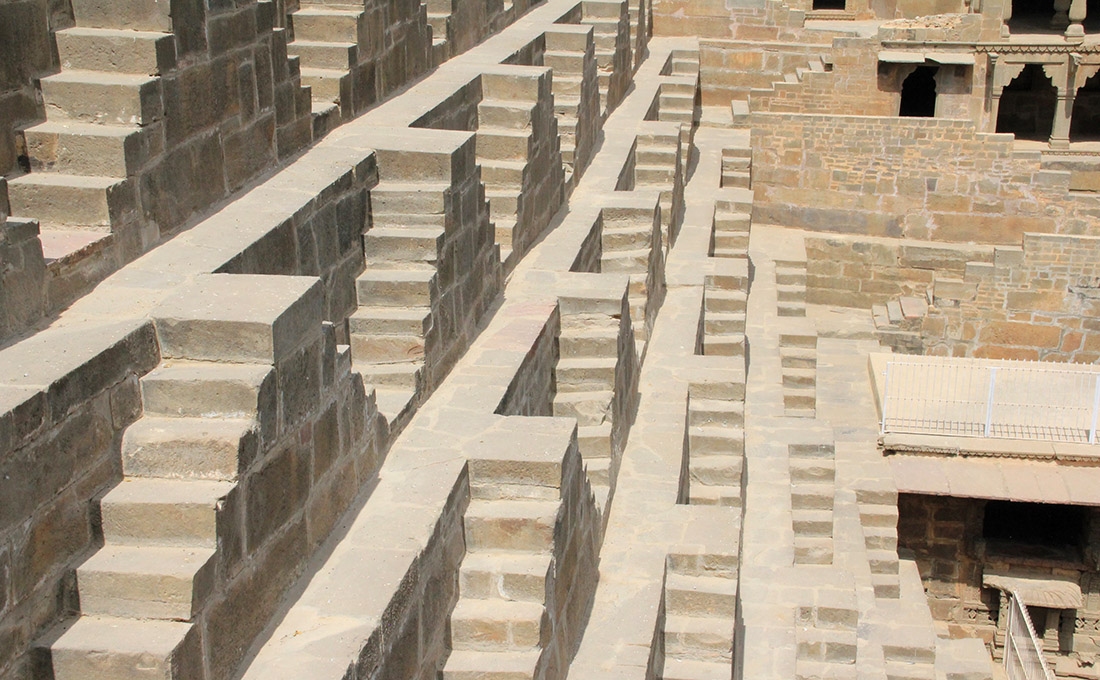
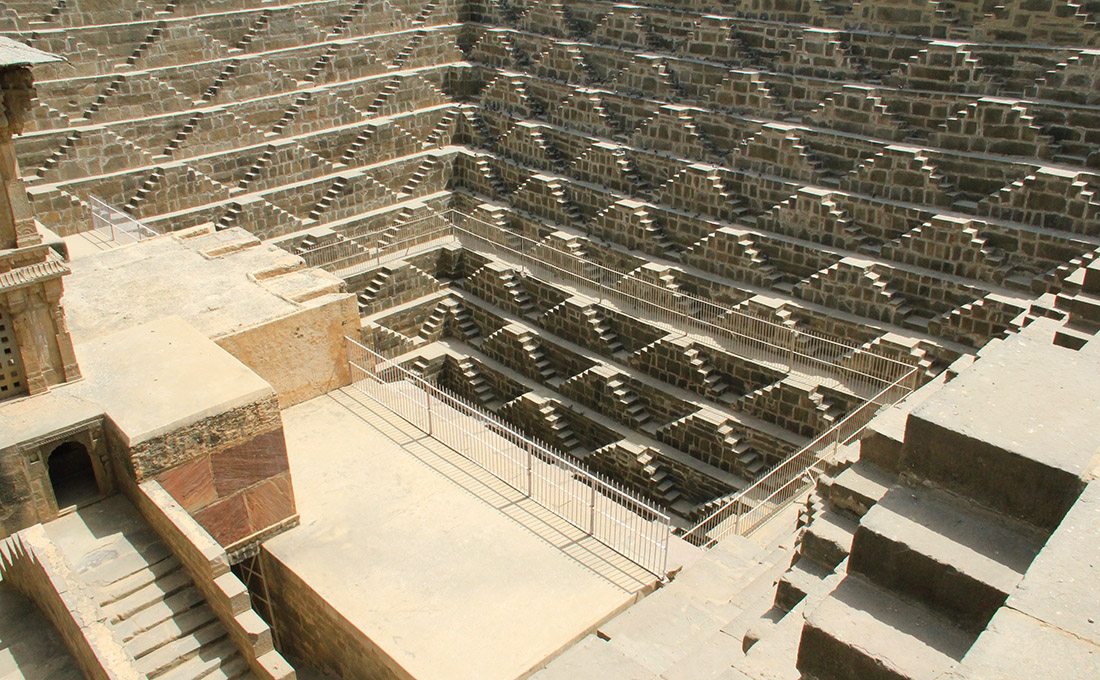
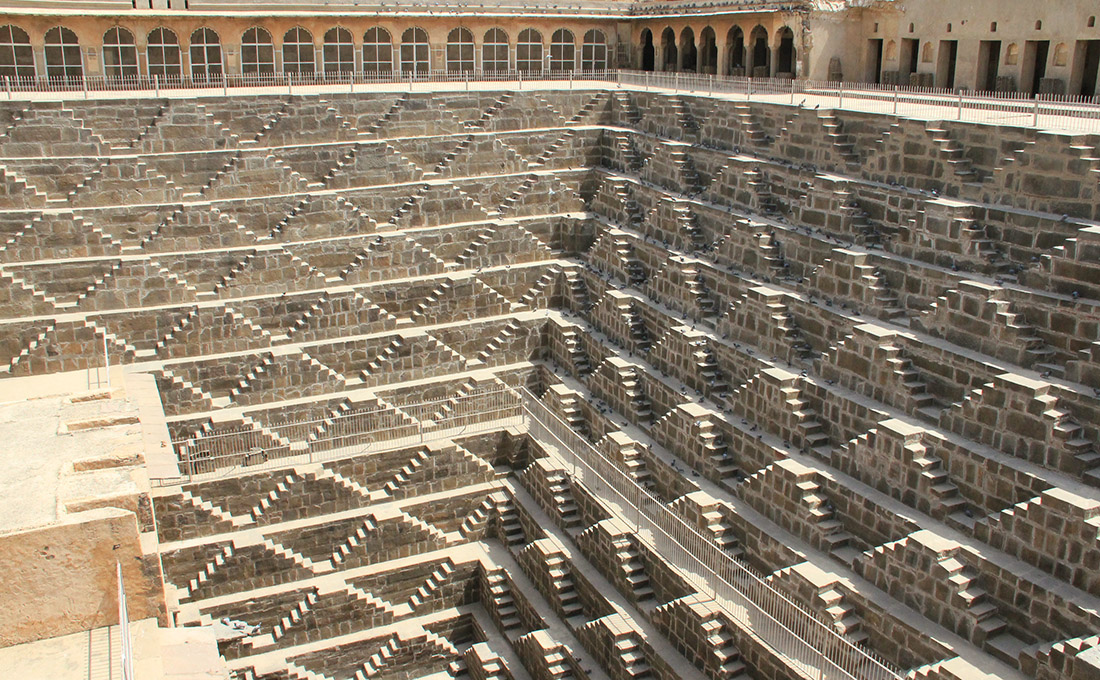
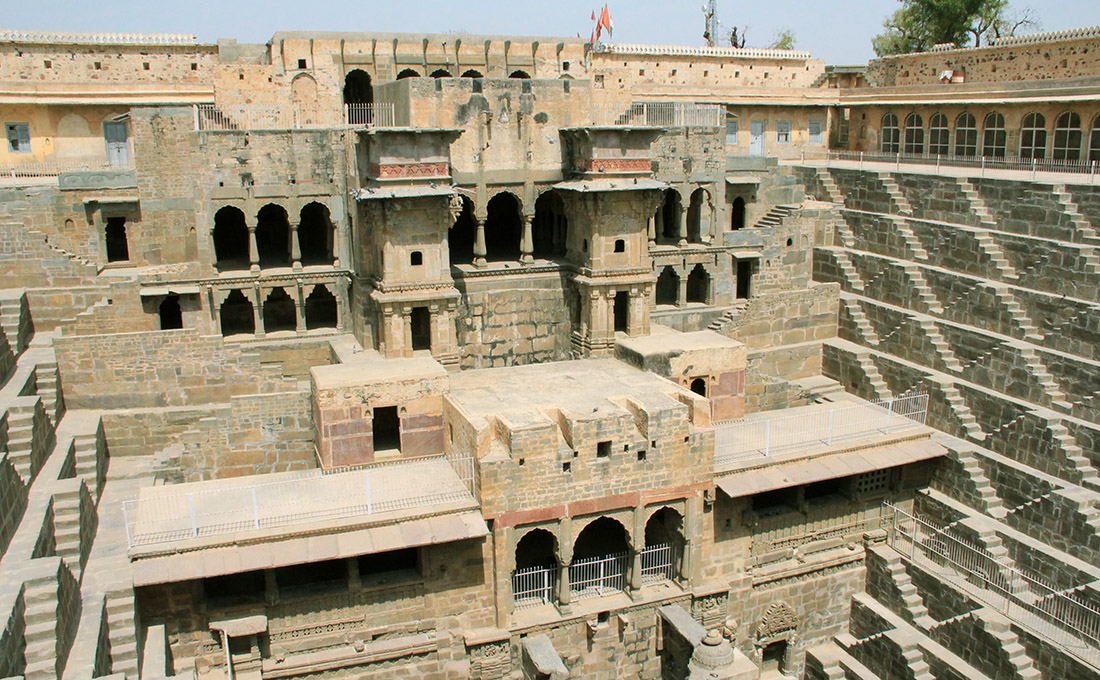
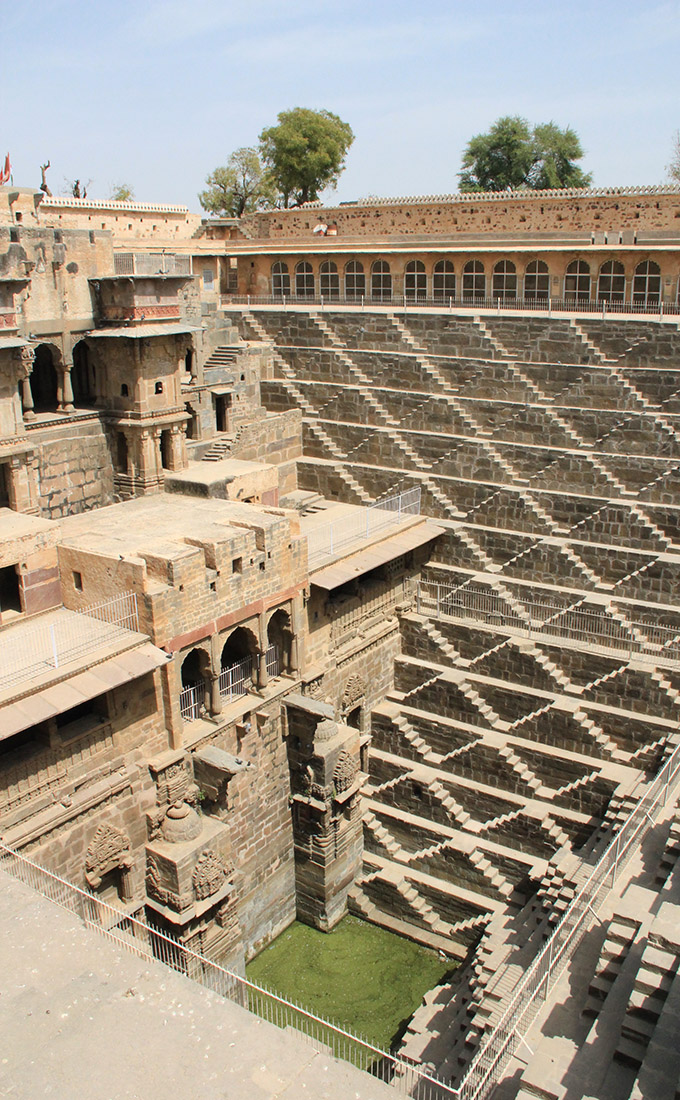 [Images: Chand Baori, Abhaneri, India; photo by BLDGBLOG].
[Images: Chand Baori, Abhaneri, India; photo by BLDGBLOG].
Apropos of nothing, here is the route from Jaipur on Google Maps.

This is a site I didn't have time to visit last time I was in India and I'm regretting it – however I did 'collect' some other fine stepwells at Bundi, where there are two matching ones in the marketplace and a little further out of town the very fine Rani ki Baori; and in Ahmedabad, where Adalaj Vav is the finest, a magnificent multi-level well with delicate carved panels and pavilions.
There's a whole area of Indian architecture relating to water; sacred tanks, reservoirs, stepwells. In Trichy I came across workers clearing a tank of water hyacinth in time for the temple festival, and in Puri I saw a gang of (mainly) women removing silt and garbage from a tank behind the Jagannath Temple. In other places, alas, the stepwells are just rubbish dumps; that's particularly galling in Jhunjunu, Rajasthan, where a stepwell was expensively renovated a decade or so ago and has now become a rubbish dump again.
Bravo! I first saw photos of this place in the film "The Fall" by Tarsem Singh. What a surreal place. Looking forward to the ruined temple shots.
Always wanted to see this amazing place since first learning about stepwells some years ago. I visited the Adalaj Wav stepwell in Ahmedabad a few years back – it's also quite a structure!
Here are some pictures: http://www.flickr.com/search/?q=adalaj+wav&w=12771303%40N00&ss=2&z=m
I don't really know much about stepwells or Indian architecture for that matter but when I fist saw these photographs I was blown away by the sheer scale and intricacy of this place. I think this may well be a new avenue of interest for the short term. Thank you for such an insightful post.
Dave, I would love to see that place – I hope to get back to India someday, and I will add it to my (extremely long) list of sites to try to see.
Andrea, I posted some photos from one of the stepwells in Bundi, if you are interested. Thanks for the note!
Incredible pieces of civil architecture. Thanks for sharing the photos.
Though very distinct, these reminded me of barays, giant artificial ponds, of ancient Khmer cities.
Here's a super common angle of the main temple of Angkor Wat reflected on one.
http://www.flickr.com/photos/alimanco/6103808533/in/set-72157627447364285
Thanks for all those pictures. Seeing Chand Baori with all these gorgeous pictures taken from different points of view is very enriching. Somehow looking at this architectural "Folly"
I cannot help but think about M.C. Escher and I suppose I'm not the only one.
Kann mir jemand sagen wie hoch die durchnittliche Stufenhöhe ist ?